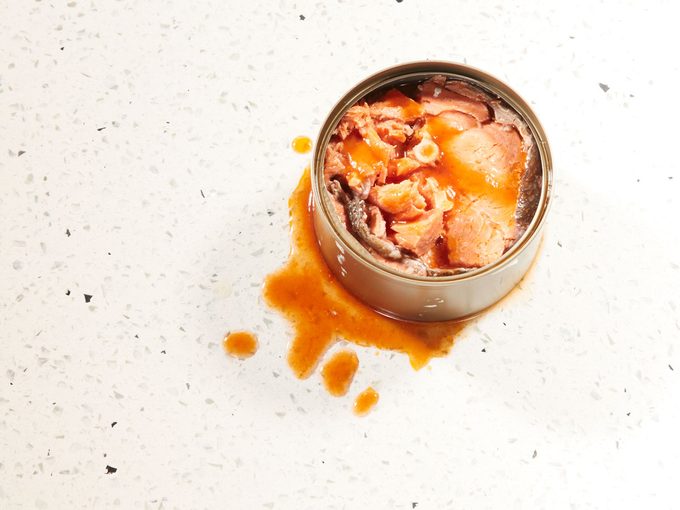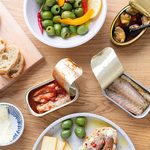Why Quality Canned Fish Should Be A Pantry Staple
Thanks to our growing interest in Spanish and Portuguese flavours, canned fish and other Mediterranean-style delicacies are having a moment.

Canned fish is having a moment
When I was a little girl, my dad loved to eat canned fish. Smoked oysters with a squeeze of lemon, sardines on rye toast, mashed up salmon with mayo — he was the only person I knew who ate such things. To be honest, I thought it was weird — until the day when my dad made a meal by opening his beloved jars and tins, along with a good loaf of bread and a salad, and called me to the table. As I tentatively nibbled on a sardine sandwich, it was more about not wanting to hurt his feelings than about genuine appetite. But the discovery was instantaneous and mind-blowing. Canned fish is briny and flavourful and delish! Life was more exciting from that day forward.
Buying canned fish and other delicacies
With the growing prominence of Spanish and Portuguese flavours popping up on this side of the Atlantic, canned fish and other preserved Mediterranean-style delicacies like seafood, beans and vegetables are having a long, delectable moment. In fact, nutritionists even recommend buying these canned foods.
Or perhaps it’s more of a renaissance, given the fondness of earlier generations for stuff in a can. And we’re not talking one-buck cans of sardines, either. Today’s preserved seafood may be locally sourced or imported, but in either case, the options and quality have come a long way.
In fact, at trendy restaurants like Saltie Girl in Boston and Huertas in New York, the chefs incorporate canned mackerel, clams and squid into their menus, explaining that they are choosing preserved over fresh because the process improves flavour and texture. In London’s fashionable Soho district, dinners at Tincan are taken a step further, treated to “the best canned seafood in the world,” almost right out of the container. Closer to home, Toronto’s Bar Raval serves tinned smoked mackerel so good, even the oil is irresistible.
But is canned fish healthy?
From a health point of view, it’s important to consider mercury (in the case of canned fish and seafood), as well as sodium, the integrity of the canning or jarring process and the overall quality of the food itself.
In terms of nutrients, mackerel is high in omega-3 and omega-6 fatty acids and protein and contains less mercury than canned tuna. Meanwhile, canned sardines are an excellent source of omega-3 fatty acids and vitamin D. In addition, they are one of only a few non-meat sources of vitamin B12. Canned clams are rich in minerals like iron, potassium and phosphorus, high in protein, low in fat and resistant to contaminants.
In general, check labels and opt for products that are caught sustainably, tested for mercury and BPA-free whenever possible. Raincoast and Ocean Brands are two good labels, but there are many more out there, depending on where you shop. And that’s just fish. Jarred or tinned beans and chickpeas, roasted peppers, artichokes, olives and hearts of palm can be nutrient rich and healthful (without the same contaminant concerns), especially if you opt for low-sodium, organic choices.
The convenience is key
Perhaps the best news of all is the way that these super-convenient, relatively inexpensive building blocks can work for you when entertaining. Simply stock your pantry with a stash of quality tinned treats and you will have the makings of a tasty, fashionable Mediterranean cocktail party at a moment’s notice (get started with our 7-day meal plan). Oh, and don’t forget the cava. (Check out these 7 other pantry essentials that should always be in your kitchen.)
Here are three recipes to get you started:
• Clams on Toast
• Homemade Hummus with Warm Chickpeas, Sumac and Pomegranate
• Roasted Red Party Peppers
In addition to the ingredients called for in these dishes, keep an assortment of fresh herbs, nuts, olives and spices on hand throughout the season and you’ll always be ready for drop-ins.




